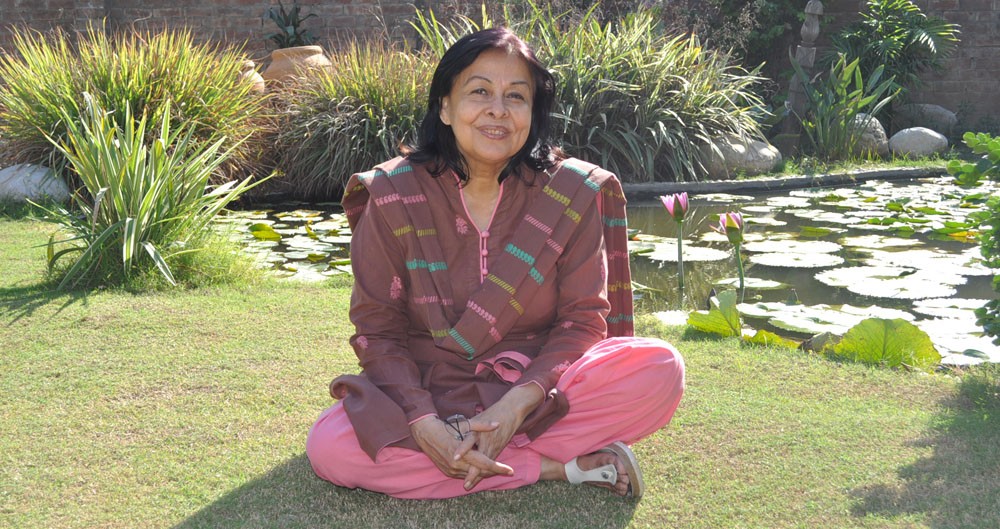
Ayesha Noorani, the qualified architect who envisioned the Daachi Foundation and successfully held an arts and crafts exhibition at the Old Tollington recently

The News on Sunday: As a practising architect with a decade of teaching experience at the National College of Arts (NCA), what motivated you to devote yourself full-time to the Daachi project?
Ayesha Noorani: Though the Daachi Foundation formally started in 2005, the idea had been with me for a long time. As a tourist, I was always impressed by the manner in which other countries had preserved their cultural heritage. While touring South Asian countries, I made it a point to visit their artisan villages. The sad state of neglect and indifference towards our cultural heritage bothered me. Daachi came as a divine calling.
The idea of providing a platform for the preservation of local crafts and encouraging the self-sustainability of cottage industries was a daunting task. But the support and enthusiasm of like-minded friends ensured that this ambitious project was launched with a craft mela [held at Alhamra Cultural Complex] in 2010.
TNS: Who is part of the team Daachi?
AN: The Daachi Foundation is run by volunteers belonging to diverse backgrounds. Its governing body includes architects, educators, doctors, entrepreneurs, artists, and journalists. Anyone can be a part of our team. The only criterion is the sincerity of purpose of a person towards working for the betterment of our society.
Social uplift is a test of dedication and oftentimes the team has had to let go of individuals who were unable to commit themselves to the project.
TNS: There are a lot of organisations working for the preservation of local arts and crafts. What differentiates Daachi’s mission from others?
AN: We share a commonality of purpose with the other NGOs working in the field. However, the concept of sustainability of lifestyles is at the core of our projects.
Daachi is all about helping local artisans realise their potential and improve their standard of living through self-sufficiency. We believe that it is far better to work and create with your hands before you are forced to spread them and beg.
By providing a platform for small-scale entrepreneurs and budding artists, Daachi hopes to promote environmentally friendly lifestyles. Our focus is limited not just to preserving ethnic crafts but also includes increasing awareness about making healthy lifestyle choices pertaining to diet, housing and recreation.
However, it is not a goal that can be accomplished in isolation. In fact, the success of our first exhibition owes a lot to the help provided by Aik Hunar Aik Nagar (AHAN). The Daachi Foundation wants to join hands with other organisations as together we can make a larger impact and help more communities.
TNS: How does the Daachi aim to dispel the disinterest surrounding indigenous arts and crafts?
AN: Our artists are very talented. Unfortunately, due to a lack of opportunities and resources, they have been unable to market their products in a befitting manner. Daachi does not simply provide a venue for sale; our team also guides the craftsmen on how to innovate traditional designs to widen their appeal to a contemporary market.
Our target audience was the non-brand conscious middle class but the high quality of craftsmanship is beginning to attract the elite as well. Everyone goes home happy and the proof is evident in the increasing number of visitors at each successive exhibition.
TNS: The Daachi Foundation just wrapped up its fifth annual exhibition. How have you managed to reach out to so many artists repeatedly without corporate sponsorship?
AN: Our society’s support has made Daachi’s progress possible without the contribution of a single corporate sponsor. Daachi sponsors artisans, especially those from far-flung areas, and provides stalls free of cost. The balance between prices and quality ensured that entrance tickets to this year’s exhibition generated enough revenue not just to cover the overhead costs but will also contribute to the establishment of Daachi’s mega project, The Artisans’ Village.
TNS: What is the vision behind Daachi’s Artisans’ Village?
AN: The Artisans’ Village will implement the organisation’s vision of environmental and economic sustainability. The village, spread over 28 kanals of land, will provide residential quarters for visiting artisans; a performance area, the Gidaan; museum and art gallery, the Gosha-e-Alwan; a craft bazaar; a food court, the Tuam Gah, with stalls serving different regional cuisines; a health centre and artist workshops.
It is hoped that the village will be an educational space for school children and help Daachi achieve its goal of inculcating pride in Pakistan’s rich cultural heritage.